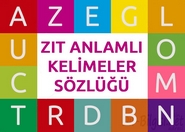What can the Current Structure of Media Tell us about Democratization in the Arab World?
Introduction It cannot be denied that especially after 1990, there were two main ‘drivers’ of change which were the end of the Cold War and unquestionably the explosion of communications technology. While the former one put an end to bipolarity and endorsed states and people are better off standing by each other, the latter one -advanced telephones, video recorders, satellite televisions and internet- has expanded the scope of people’s imagination.As Alterman (2002) agrees that these changes have changed many things in our every day life. The way people dialogue, the way the governments act, the way we are taught at universities, the way we think the world and so forth have rapidly changed and the notion that we were on the brink of a new world order has already come true. We do now talk about the influence and effect of these communications technology on spreading democracy and awareness around the globe and preventing the world from domestic and international conflicts. In order to consolidate my opinion let me enable you to think of Donald Chatfield’s statement: “New patterns of information dissemination follow highly decentralized networks rather than the old hierarchical structure. As a result, communication becomes more interactive, with less opportunity for governmental or corporate intrusion. The absence of ‘noise’ in new communication networks permit the flow of information with fewer ideological filters and allow citizen groups to...
Devamını Oku





